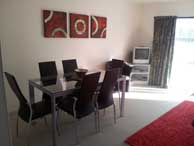ACCESSIBILITY
This page describes the different ways to access the content of this website and also the accessibility standards it complies with.
Access keys
Most browsers support jumping to specific links by typing keys defined on the website.
On Windows systems with Internet Explorer browser, press ALT + an access key and then press Enter. On Windows systems with Firefox 3 browser, press ALT + Shift + an access key and then press Enter.
On Macintosh systems, press Control + an access key and, for some browsers, then press Enter.
With the Opera browser, press Shift + Esc + an access key. When Shift + Esc is pressed, a list of access keys is displayed.
We have defined the following access keys:
1 = Home
2 = Site map
8 = Terms of use
9 = Contact us
0 = Accessibility
Standards compliance
All pages meet the following standards benchmarks:
- All web pages are designed to be interoperable in compliance with the World Wide Web Consortium (W3C) standards and are checked for quality assurance.
- Complying with guidelines of the W3C Web Content Accessibility Guidelines 1.0.
- Validated as XHTML 1.0 and CSS2 by W3C.
- Only "browser-safe" or standard Netscape colours are used in the page design.
- Web pages use structured semantic markup.
Navigation aids
- Many links have title attributes that describe the link in greater detail, unless the text of the link already fully describes the target.
- Whenever possible, links are written to make sense when read out of context. Many browsers (such as JAWS, Home Page Reader, Lynx, and Opera) can extract the list of links on a page and allow the user to browse the list separately from the page.
- Link text is never duplicated; two links with the same link text always point to the same address.
- There are no javascript: pseudo-links. All links can be followed in any browser, even if scripting is turned off.
- Links that lead to other web sites open in new windows.
- Access to every page of the website is available through a separate site map.
Images
All content images include descriptive ALT attributes. Purely decorative or indicative graphics include null ALT attributes.
Visual design
This website uses cascading style sheets for visual layout.
- The style sheets use only relative font sizes for the main content, which are compatible with the user-specified 'text size' option in visual browsers. For example, in Internet Explorer you can make your default text size larger by selecting View > Text Size > Larger (or Largest) or in Mozilla/Firefox by selecting View > Zoom > Zoom In.
- If your browser or browsing device does not support style sheets, the content of each page is still readable.
Portable Document Format (PDF) Files
PDF documents can usually be downloaded and opened with any PDF reader. However, some older versions of PDF readers will not open PDFs created using more recent software.
PDFs provided on this site are optimised for users with the latest version of popular PDF readers. These are available free by download from companies such as Adobe or Foxit.
Feedback
Our aim is to make this web site easy to use for everyone. If you do encounter any difficulties with its accessibility, please tell us and we will work with you to resolve any problems. Please contact our Website Administrator.




